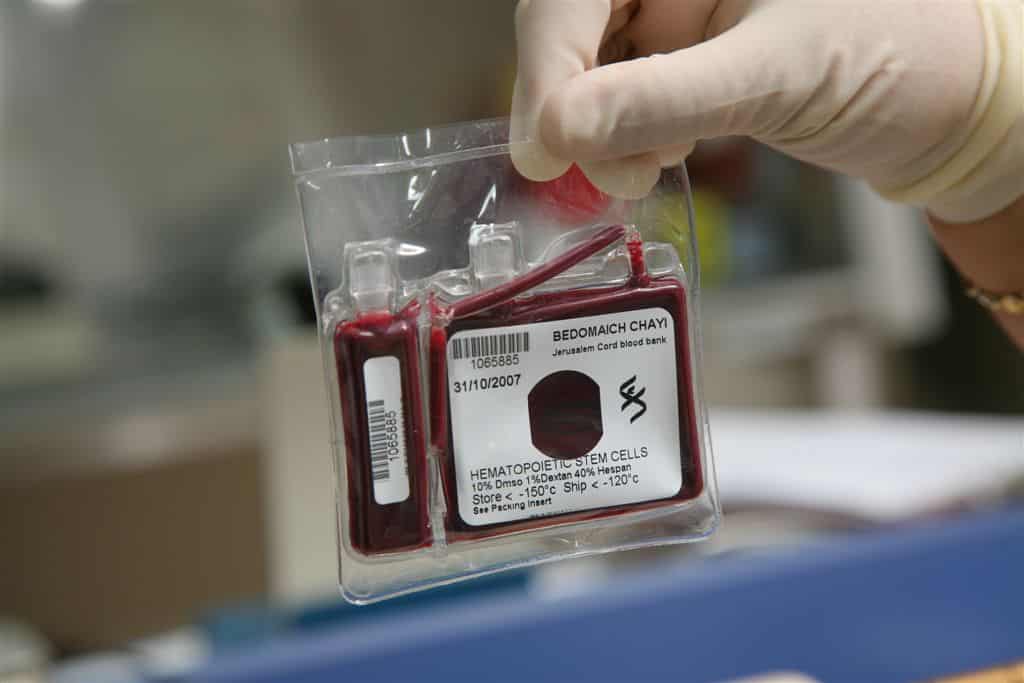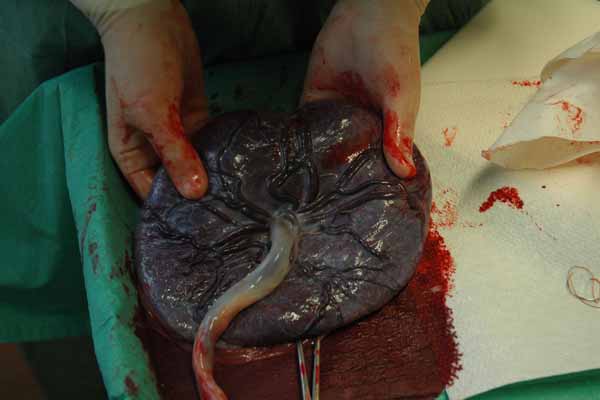It has been a while now I have been researching about umbilical cords and stem cells, where I came across a very frequently associated question – how much is cord blood banking? Before I give you the answer, let me explain to you everything about it. If you feel, you know it and want to know its cost alone, then click the associated link given in the below box.
What Is Cord Blood?
It is the blood, which remains in placenta and umbilical cord following birth. This blood is basically discarded. However, cord blood banks offer facilities to store & preserve the baby’s cord blood. And if as a parent, you decide to store your baby’s cord blood, then it is vital to utilize a cord blood bank that is accredited by AABB (American Association of Blood Banks). And one such is Viacord.
What Is Cord Blood Used For?
The baby’s cord blood has some lifesaving cells known as “stem cells” and they have an incredible power to cure or heal a disease. Today, the stem cells from cord blood is widely used in treating about 80 different health disorders even including few cancer types, blood diseases and so on. Still, researchers continue expanding different uses of cord blood. And storing your kid’s stem cells literally means that you have access to his or her stem cells at the time of need.
What Is Cord Blood Banking?

Cord blood banking is a medical process in which a baby’s umbilical cord stem cells are collected and stored for future medical use. And the place, where it is stored is called “Cord Blood Bank” and can be classified into 2 major types
- The private cord blood bank
- The public cord blood bank
Cord blood banks have been introduced since 1990. It is mainly used to treat some blood diseases & immune system disorders.
Why Should You Store Your Baby’s Blood In Cord Blood Bank?
So, why as a parent should you use cord blood bank? This is a good question. Cord blood is a rich source of stem cells (genetically associated to the baby & his or her family). These stem cells contribute to the development of organs, tissues and other body systems.
Bone marrow transplants already use stem cells to treat leukemia and have been doing so for over 50 years
Stem cells from a baby’s cord blood might be extremely useful in treating a few conditions or diseases of a sibling or parent. Stem cells can transform into different cell types to generate new growth & development. They are like immune system’s building blocks. This cell transformation gives a physician the right way or method to treat a few inherited health issues. Therefore, cord blood banking is often helpful to families, who naturally inherit some health disorders.
Banking baby’s stem cells and blood in a cord blood bank is more like insurance. Preferably, one will not require accessing his or her baby’s stem cells to address a specific medical condition. However, using cord blood bank provides a relief knowing that one has a valuable source when he or she needs it.
How Is A Baby’s Cord Blood Collected?
Process of cord blood is safe, painless and simple. It does not take more than 5 minutes. And is taken right after the baby’s birth. Most importantly, it is 100% possible in both cesarean and vaginal deliveries. A healthcare provider often uses either the bag method or syringe method to collect blood.

- Bag Method = In this, umbilical cord is been elevated in order to drain blood in a bag.
- Syringe Method = In this, a syringe is used for drawing blood from umbilical cord within a few moments after it is been cut. It is more like a blood test.
The cord blood must be collected only during the initial 15-minutes following birth & should be processed by lab officials within 48-hours of its collection. Whatever method is used, the bag or syringe must be labeled with a distinct number. This denotes your baby’s cord blood.
What Risks Can A Mother & Baby Have During The Process?
Surprisingly there are NO health risks involved while collecting cord blood. In fact, the process is so easy and painless that mother or baby doesn’t even realizes if such a thing was ever done. The blood is collected from umbilical cord right after the birth. There is neither discomfort nor pain. It is 100% safe and does not cause any harm.
What Happens After The Cord Blood Is Collected?
Once the baby’s cord blood is been collected, it will be then processed & stored by a laboratory accredited by AABB (American Association of Blood Banks).
What If You Don’t Want To Store Your Baby’s Cord Blood?
Your baby’s stem cells could be extremely valuable for other families if not to you. From institutions to medical facilities and nonprofit blood banks, numerous locations collect, process, store & use stem cells of your baby’s cord blood for treating people in need. And for this, there isn’t any cost involved, meaning the one donating the cord blood won’t be charged. And if you don’t prefer storing your baby’s cord blood, try donating it at least. This donation could seriously make a big difference in someone’s life.
Can You Store Your Baby’s Cord Blood Without Paying?
Yes of course. There are 3 ways you can do this.
- One, it is possible only if you have a family member with a qualifying medicinal condition & who might require a therapy using newborn’s cells.
- Two, there are many cord blood banks that run different charity programs for storing the cord blood free but this is only if any existing member of the family – either the sibling or parent of the baby had a health issue treated with stem cell therapy. Moreover, you will be asked to have your doctor write down the associated medical history. Only then, you will be accepted in such a medical program. For further information on such charity programs, you can see here: Parent’s Guide to Cord Blood Foundation.
- Three, you are eligible for a free cord blood banking only if your baby has been diagnosed with a medical condition before birth. And for this, you have to participate in clinical trials earlier. For instance, if your baby is been diagnosed with a congenital heart problem or hydrocephalus prior to his or her birth then there are special programs, which allows you to enter a good hospital for delivery. And there, the cord blood of your baby will be collected and stored with appropriate care.
Not All Mothers Can Donate Cord Blood
Mothers who are 18 years old or even younger aren’t eligible to donate their cord blood. Moreover, if a mother is been treated for an illness like cancer, HIV (Human Immunodeficiency Virus) or Hepatitis, then she will not be able to donate cord blood. A mother will not be able to donate if she has delivered a premature baby (because there might not be sufficient cord blood to collect) or had multiple baby deliveries make.
The Cord Blood Is Always Screened & Tested
It doesn’t matter if you go with a public bank or private bank for storing cord blood but one is always tested for different infections like HIV, Hepatitis and so on. If the results happen to be positive for any infection or disease, then cord blood cannot be stored.
If Cord Blood Is Preserved Properly, It Is Long Lasting
Storing cord blood requires nitrogen freezer (the same technology that is used for freezing a donated sperm). This helps it to last long. The scientists who first introduced cord blood conservation methods in 1990 confirmed that few of his first specimens, which were stored 23+ years ago were as fresh and potent as they were taken after the birth.
Cord Blood Banking Pros And Cons
Cord blood banking has its own advantages and disadvantages. Let me list them to you.
Pros Of Cord Blood Banking
1. The Procedure Is Easy
It is not like other medical procedures. It is painless and easy. It hardly takes few minutes to collect cord blood after umbilical cord is been cut. Hence, there wouldn’t be any pain for both mother and baby. And delayed cord blood clamping doesn’t affect the collection procedure.
2. It Saves Lives
Since cord blood is a great source of stem cells, it can be used for treating diseases, which harm blood & immune system like leukemia, some cancer types, metabolic disorders and sickle-cell anemia.
3. Compatibility
Stem cells coming from umbilical cord blood are usually less mature when compared to the ones acquired from adult donor. Therefore, transplanting into a recipient is frequently successful. Moreover, the peril of body rejecting the transplanted or resettled cells is rare because the receiver is more likely to make use of his or her own cells.
4. Helps In Future Medical Processes
Researchers are still examining about different ways of treating other diseases using cord blood. If they are successful with their outcomes, we would be soon able to diagnose other harmful disorders too. For example, in Duke University, scientists have used a patient’s cord blood for clinical trials on cerebral palsy & Hypoxic ischemic encephalopathy (this is a condition where brain doesn’t receives enough oxygen). The trials are still under investigation in Sutter Neuroscience Institute at Sacramento (California) to know if it could treat autism or not.
5. The Freshness Remains As Such
An umbilical cord is the richest source of one’s stem cells. Yes, it is 100% possible to obtain stem cells from a person’s bone marrow. However, collecting it from umbilical cord is less painful & much easier. To top it all, the stem cells will be as fresh as they were once frozen.
6. Cord Blood Can Be Accessed Always
You will have the rights to use your cord blood at any point in time. But this is only if you have stored it in a cord blood bank. Now, there are 2 cases over here. If you preserve it in a private bank, then this blood is kept for your family alone and no one else has the rights to use or access it. However, if you preserve it in a public bank, then someone, who is in need can use it, given that cord blood of theirs and yours must be compatible. And with a public bank, there isn’t a guarantee that the cord blood will be available when you are in need of it.
Cons Of Cord Blood Banking
1. It Is Not Cheap
Even though you can donate cord blood free at a public bank but a private bank charges a lot. It is somewhere between $1400 and $2300 for just collecting, testing, registering along with an additional annual fee of $95 – $150 for storing. And often high costs make parents step back from the decision of storing cord blood.
2. Cord Blood Cannot Treat Everything
Even though some unbelievable treatments for various health problems have been invented, still stem cell therapy fail curing everything. A baby’s own stem cells will not be much helpful if he or she has genetic diseases because stem cells contain same genes. According to doctors, a baby born with genetic conditions like spina bifida or muscular dystrophy will have the same on stem cells as well. However, if the donor of cord blood is healthy & there is a family member or a sibling who has the same genetic condition, then cord blood may be an ideal match.
3. Your Child Might Never Want It
When it comes to cord blood banking cons, this is something I would like to write about. Yes, stem cells are used for treating a wide range of disorders but according to Frances Verter, director and founder of Parent’s Guide to Cord Blood Foundation, says that there are less chances your kid will need it. Even if there is a chance, it will be 1 in 217. Possibilities are that your kid will never need a transplant of stem cell with the cord blood in his or her lifetime. This is especially so true when the child does not have history of health problems in his or her family like lymphoma, sickle cell anemia, and leukemia. Even though AAP (American Academy of Pediatrics) claims that cord blood is very helpful in treating few diseases successfully but there is no strong evidence supporting cord blood banking. Moreover, if a family still decides to bank the cord blood, AAP recommends going with the public bank rather than private so that it doesn’t cost.
4. Most Cord Blood Stored Is Discarded
If you choose to go with a public cord blood bank, you are more likely not to find when you are in need because they often use it for others. Perhaps, using it to aid a sick kid or use it for stem cell study. On the other hand, if you prefer a private cord blood bank, eventually they throw away or discard the blood, which a family doesn’t want to use or store further.
5. It Cannot Treat Everyone
Usually, cord blood is used only to treat a few diseases in kids. And only three to five ounces is taken from the cord. Since the cord blood involves limited stem cells count, there isn’t sufficient quantity to treat adults.
Public Cord Blood Bank vs. Private Cord Blood Bank
As said earlier, storing your baby’s cord blood come in 2 options.
- Donate your baby’s stem cells in cord blood to any public cord blood bank so that someone in need could use it
- Pay for storing your baby’s cord blood at a private cord blood bank for your family to use it when required.
A public cord blood bank is typically a nonprofit foundation, which stores one’s donated cord blood (free). This can be further used for sick children or research. Therefore, using and accessing your own cord blood isn’t guaranteed. It may or may not be available.
A private cord blood bank is a company that charges you for storing your baby’s cord blood. Usually, the charges include for registration and annual storage. This cord blood can be used whenever your family is in need.
As a parent, if you decide to store the cord blood, then you require notifying the respective bank 4 to 6 weeks prior to your pregnancy due date.
If you’re want to donate your baby’s cord blood, then decide with a public bank, affiliated with the registry — Be-the-Match (bethematch.org/cord), which will cover all the associated costs in collecting, processing & storing cord blood.
If you belong to a family, where there is a history of diseases, especially ones associated with blood & immune system, then consider preserving your baby’s cord blood at a private bank. It is worth paying. Your baby’s cord blood could be extremely helpful in treating diseases like cancers, leukemia, sickle-cell anemia & few metabolic disorders. If any of your family members has it, then storing your baby’s cord blood is a wise option.
When it comes to banking your baby’s cord blood, parents are always facing a common choice — should we donate it to a public bank or use a private bank to store the cord blood? This choice isn’t as easy as it seems. You have to decide according to your family requirements. If you are in a similar dilemma, then let me help you out by listing you the advantages and disadvantages of using public and private cord blood bank.
| Pros Of Public Cord Blood Banking | Cons Of Public Cord Blood Banking |
| Accepts free donations | Your cord blood might not be available when your family is need of it |
| Can be accessed publicly | Like any other transplant, finding a suitable match could be a great challenge and even if its found, rejection chances are higher while receiving stem cells from non-relatives |
| Can be further used for medical research | Even though donating your cord blood is free but using it when you are in need costs you around $15000 |
| Helps people who are sick and are badly in need of cord blood to treat their illness | Once you have made the donation, you cannot stop someone from using your cord blood because it the public bank that owns it |
| You don’t have to pay while donating your cord blood. The respective foundation covers all the charges involved during cord blood collection | With a public cord blood bank, it is extremely challenging to locate donated cord blood that matches the stems cells of a minor with certain illness |
| Pros Of Private Cord Blood Banking | Cons Of Private Cord Blood Banking |
| Lets you access your baby’s cord blood at any point of time | Storing cord blood in a private bank can be highly expensive |
| One doesn’t have to look for a donor, especially when the kid requires stem cells transplant in future | For genetic disorders, a transfusion with an individual’s own cord blood might not be adequate |
| If the baby’s family member (any) requires transplanting his or her stem cells in the future, then chances are high for a cord blood match | Chances of using cord blood in the future are very less. Your child might not even need it at all |
| The success rate of stem cell transplants using cord blood of a family member is double that of the transplants using public donor’s cord blood | Most insurance firms don’t cover charges of cord blood collection & banking |
| You have 100% rights as to who should be using your baby’s cord blood |
Note: Banking a baby’s cord blood is an important family decision and shouldn’t be done with haste. Take time discussing and weighing about different options with your friends and relatives on cord blood banking.
How Much Is Cord Blood Banking?
Before I tell you how much is cord blood banking, here is a quick overview of how it is done.
Cord Blood Collection Process
The procedure of cord blood banking is simple, harmless and painless. It takes a few minutes to complete the medical process and is done right after birth. After researching various cord blood banking process, here is a general picture of how it’s done:
- The parent is given a cord blood collection kit once they register with a bank
- The parent is then supposed to bring this kit to the respective hospital on the delivery date & give it to the nurse or delivering physician
- The physician then collects cord blood & maternal blood (to test if there are any infections) after birth
- The parent then has to ship the collected cord blood to the bank using a pre-arranged courier
- The bank then performs some tests on the recipient’s cord blood to know if there are any infections.
- Once the test results arrive and if there is any infection found then it will not be stored else a certificate or report is given to the family
If you are making a decision of storing your baby’s cord blood then you would certainly want to know how much does cord blood banking cost. Well, it is not cheap. It is really expensive. If you are donating the cord blood, then the respective public bank will cover the entire cost of collecting, processing & storing. You don’t have to pay anything. So, the cost of cord blood banking is more often refers to a private bank.
Usually, 2 charges are involved with cord blood banking.
- Initial charges – covers registering, testing and collection fee with1 year storage (minimum)
- Secondary charges – yearly charges for cord blood storage
The price is expensive but the cost of cord blood processing is considerable. On the other hand, cord blood banking cost varies from one foundation to the other. However, based on the predetermined storage period, the charges range between $900 and $2100. The annual storage charges after initial storage costs will be around $100 to $150. And, if you are planning to preserve it for a long time, say for example 10 years or 20 years, then chances are that few banks might offer discounts.
Cord Blood Bank Cost Overview
- Start-up Charges – around $300 (varies from one bank to the other)
- Collection, Testing, Processing & Storage charges – between $900 & $2100 (for 1 year)
- Additional Annual charges – between $100 & $150
If you don’t find it affordable but still wish to preserve your baby’s cord blood, then there are many banks offering payment plans, which range from 0% interest installments given for few months to long-term financing along with interest. Often banks offer all inclusive price package on 20-years cord blood storage. On longer run, this is certainly less expensive when compared to the usual price model.
Financial Considerations
- Few cord blood banks give discounts if a family prepays storage for long periods like 5-years, 10-years or 20-years.
- Few cord blood banks incorporate medical shipping charges as their base fee.
- Few cord blood banks give discounts for a family, who banks more than 1 baby’s cord blood.
- Few give special offers or “limited time” discounts, wherein one can get coupons from the respective cord blood bank’s website.
If suppose your child is born with some diseases, it is good to save the cord blood. Some banks like “Carolinas Cord Bank” at the “Duke University” and the “Famil cord” existing in “Los Angeles” help you to do this process, if your child has a sibling who is ill out of certain diseases. The blood bank like Family Cord will help you to store your cord blood for free at the very first year. To know more about the blood banks offering such facilities take a look at this page.
So, I hope I have cleared your question – how much is cord blood banking. If you have any associated information on cord blood banking, which you think others must know, feel free to drop them in the comments box.



